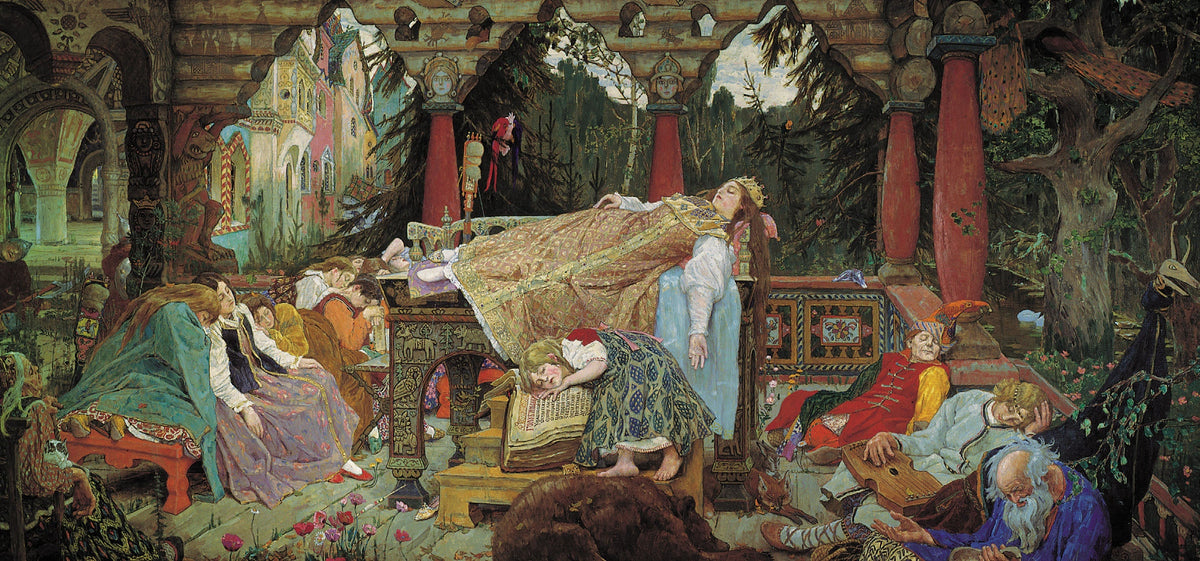
The Evolution of Sleep: From Caves to Modern Comfort
|
Time to read 3 min
This store requires javascript to be enabled for some features to work correctly.
Written by: The Myza Editorial Team
|
Time to read 3 min
The past was not the place for sleep. Sure, everyone did it. It’s no new phenomenon; we’ve been sleeping since the beginning of time to fulfil our basic scientific requirements for rest. We left our mother’s wombs with no instructions, but still knew how to cry ourselves into a sweet slumber. And nowadays, we close our eyes, stop thinking too much, and try to get our heart rates to drop a little before we succumb to a world of darkness or dreams. But that’s not to say that the value of sleep hasn’t evolved over time.
We’ve moved from Neolithic recesses in caves, padded with grass and heather, to entire rooms dedicated to sleeping, decorated with plush pillows and duvets made up of materials we can barely pronounce. We’ve surpassed the ancient Egyptian mentality of fearing slumber for being too close to a state of death, and we’ve certainly moved beyond the Roman hatred of rest for lying in the way of paving roads, building coliseums and aqueducts, and basically conquering half of the world. Carpe diem, “seize the day” indeed – but what about the night time? The Middle Ages, with poor levels of hygiene and sanitation, saw people crammed together in their collective filth to preserve heat during cold winters. The chamber pot spectacle merely enhanced the experience, with its ‘fragrance’ only to be masked by an overwhelming smell of smoke from fires and embers placed under the bed for added warmth.
With the Renaissance came the beautification of sleep; boudoirs were sensationalised, mattresses plumped and bedframes carved to grandeur; China’s Ming dynasty even hosted guests in the bedroom to show off the intricate designs and to display wealth to members of the community. And as it turns out, our affinity for sleeping in a single eight-hour stretch is also a fairly new convention. Chaucer’s Canterbury Tales and Homer’s Iliad suggest that people slept in two four-hour blocks, with an “active” period in between; historian A. Roger Ekirch even claims that “a sixteenth century French physician was of the opinion that couples, after their first sleep, engage in connubial bliss when, as he put it, were better at it and enjoyed it more.”
So the next time you’re awake at 3am, gently remind yourself that you’re a mere product of evolution, and that it’s perfectly normal to twiddle your thumbs as you wait for round two of rest. We are, after all, in the golden era for sleep – we have beds to ourselves, functional toilets in place of chamber pots, mattresses that remember body shape, and even technology that aids our time in blissful ignorance. Carpe diem? No thanks. Carpe noctem.
Ancient Egyptians associated sleep with being too close to death, and Romans viewed it as a hindrance to productivity, preferring to spend their time building, conquering, and working instead of resting.
In the Middle Ages, people prioritised warmth and practicality over comfort, often sleeping in cramped spaces with poor hygiene. The Renaissance shifted focus to beautifying sleep, introducing grander beds, elaborate boudoirs, and the idea of showcasing wealth through bedroom decor.
Waking up at 3am can be traced back to historical sleep patterns where people slept in two blocks with a wakeful period in between. It’s a natural part of human evolution, and modern technology now supports smoother transitions during nighttime rest.
The Myza Editorial Team
Read moreReceive 10% off your first order when you subscribe to our newsletter


